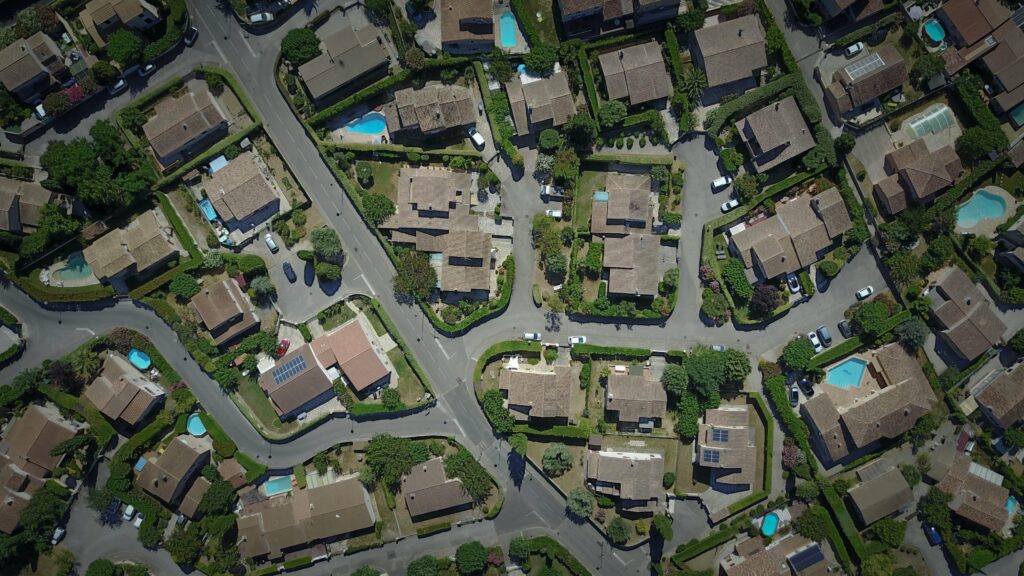
White picket fence, 1 acre plot of land, a mowed backyard, and a spacious house that brings comfort and stability to a family. This picturesque suburban lifestyle is heralded as the American dream, with rows upon rows of square slots of land only accessible via cars and separated from commercial and industrial districts. Though buying toilet paper and bread may be a thirty minute drive and your dad who went out to buy milk may just be stuck in traffic, the suburban dream lives on, especially during the height of the pandemic. With the urban dream comes the nightmare of habitat destruction, air pollution, and carbon emissions further spurring on the climate crisis.
Up to 30% of global carbon emissions can come directly and indirectly from urban sprawl as the infrastructure, land clearing, and traffic emissions adds a hefty toll to our carbon budget. The isolation and segregation leads to greater income inequality, gentrification, and loneliness, and the increased usage of cars leads to higher prevalence of type 2 diabetes, heart diseases, cancer, and automobile accidents. Isolation in suburban environments also makes it harder for the development of crucial social skills leading to relationship and mental health problems down in the future. It’s hard to meet and play with kids if your neighborhood has no parks where you can meet your friends everyday and you’re essentially confined to a square piece of grassy prison.
Why is urban sprawl still a thing?
It’s understandable that people like their spacious living spaces, yard, and privacy. The demand for large, single detached homes is still high. The irony though is that home ownership is actually decreasing, especially amongst young people, in North America so I guess we gotta make do with potatoes for now. So how do we increase the supply of housing while avoiding the eviction and extinction of our local wildlife? One way we could do that is to increase the housing density: we build up rather than out!
What makes a city good? What makes a living situation ideal? What makes a life meaningful? Just kidding. But according to more than 20,000 people around the world, some of the best cities around the world include Edinburgh, Chicago, Medellin, and Amsterdam. What all of these cities have in common are aesthetic neighborhoods and buildings, walkable amenities, lively events, and good public transportation. A good city gives you the option to forgo a car to survive and gives even the poorest a means to traverse to all the areas. And even if you kept a car, the public transportation options would free up the streets from fearful drivers who wouldn’t/shouldn’t be driving in the first place! Aren’t y’all glad I live in Vancouver.
Changing from subparbia to citytopia would require us to increase city density but not by building a twenty story luxury building right next to a single detached home or by building a rat poison factory right next to a healthcare center. Zoning laws determine where things can be built and in the U.S, many cities allocate 75% of the land to single family homes. The solution seems pretty straightforward. We change the zoning laws to allow for these missing middle buildings such as townhouses, duplexes, triplexes, with the potential to add commerce to desolate communities.
In 2021, California became the third state to eliminate single family zoning, joining Oregeon and Washington. In 2018, Minneapolis was the first major city to remove single family zoning and has removed all parking requirements. Progress has been incremental and any real pay off to these policy changes will be experienced in the future. Rent prices have already slightly dropped in Minneapolis, and Portland Oregon has added more units after their own ban on single family zoning. People are waking up to horrors of inefficient city planning and though new developments would still be met by opposition from the NIMBY movement and public agencies, YIMBYs and environmentalists are hoping to halt urban sprawl to a crawl.
